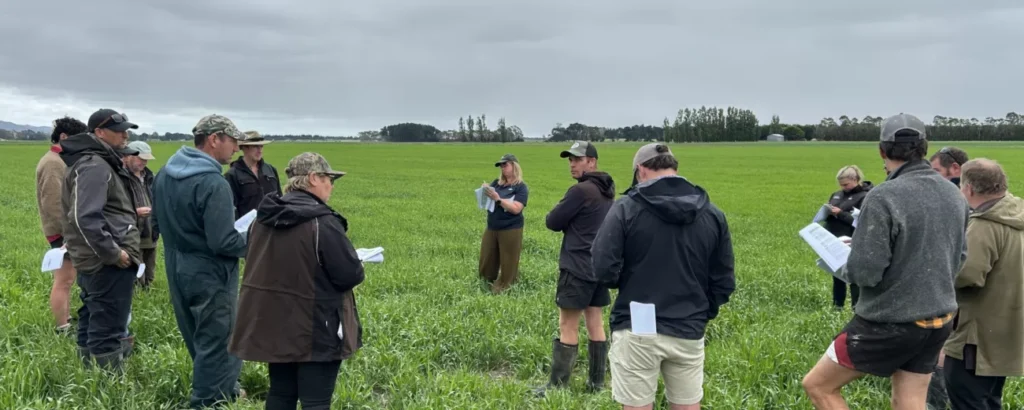Fallias Field Report – Get Your Analysis!
The Fallias Field Report is an influential document that provides invaluable insights and recommendations for various sectors, including business, government, and non-profit organizations. This guide offers an in-depth look at the Fallias Field Report, exploring its history, structure, key components, and practical applications.
Whether you’re a seasoned professional or new to the report, this article will equip you with a thorough understanding of how to leverage its findings for optimal results.
Introduction to the Fallias Field Report:

What is the Fallias Field Report?
The Fallias Field Report is a comprehensive analysis and evaluation document designed to offer actionable insights and strategic recommendations. It serves as a valuable tool for organizations seeking to enhance their operations, optimize performance, and address specific challenges. The report typically includes a detailed examination of various aspects of an organization’s functioning, providing a roadmap for improvement.
Importance of the Report
The significance of the Fallias Field Report lies in its ability to distill complex data and observations into practical recommendations. By utilizing this report, organizations can make informed decisions, implement effective strategies, and achieve their goals more efficiently. The report’s insights are grounded in thorough research and analysis, making it a trusted resource for strategic planning and operational enhancement.
History and Purpose of the Fallias Field Report:
Historical Background
The Fallias Field Report was first introduced in the early 2000s as a response to the growing need for detailed and actionable organizational analysis. Its development was driven by the need to address inefficiencies and challenges faced by organizations across various sectors. Over the years, the report has evolved to incorporate advancements in research methodologies and data analysis techniques, maintaining its relevance in an ever-changing landscape.
Purpose of the Report
The primary purpose of the Fallias Field Report is to provide a structured analysis of an organization’s current state and to offer recommendations for improvement. It aims to identify areas of strength and weakness, assess performance against benchmarks, and propose strategies for addressing identified issues. The report is designed to be a practical tool that guides decision-making and enhances organizational effectiveness.
Understanding the Structure of the Report:
Report Layout
The Fallias Field Report is typically organized into several key sections, each addressing different aspects of the analysis. The common structure includes:
- Executive Summary: A concise overview of the report’s findings, recommendations, and key insights.
- Introduction: Background information on the scope and objectives of the report.
- Methodology: Description of the research methods and data collection techniques used in the analysis.
- Findings: Detailed presentation of the data and observations.
- Recommendations: Actionable strategies and solutions based on the findings.
- Conclusion: Summary of the report’s main points and final thoughts.
Also Read: Realm Scan – Navigating the World of Scanlation!
Detailed Breakdown
Each section of the report serves a specific purpose and contributes to the overall analysis:
- Executive Summary: Provides a snapshot of the report’s key points, making it easy for stakeholders to grasp the main takeaways quickly.
- Introduction: Sets the stage for the report by outlining its objectives and scope, providing context for the analysis.
- Methodology: Offers transparency regarding the research approach, enhancing the credibility of the findings.
- Findings: Presents a thorough examination of the data, highlighting trends, patterns, and key observations.
- Recommendations: Delivers practical and strategic advice, offering clear steps for improvement.
- Conclusion: Reinforces the report’s main messages and provides final insights.
Key Components of the Fallias Field Report:

Data Analysis
A crucial component of the Fallias Field Report is its data analysis. The report includes a comprehensive examination of quantitative and qualitative data, providing a clear picture of organizational performance and areas for improvement. This analysis forms the basis for the report’s recommendations and ensures that they are grounded in evidence.
Strategic Recommendations
Based on the data analysis, the report offers strategic recommendations aimed at addressing identified issues and optimizing performance. These recommendations are designed to be actionable and relevant to the organization’s specific context, providing a clear path forward.
Performance Metrics
The report includes performance metrics that benchmark the organization’s performance against industry standards or best practices. These metrics help to identify gaps and opportunities for improvement, guiding the organization in setting realistic and achievable goals.
Case Studies and Examples
To illustrate the applicability of its recommendations, the Fallias Field Report often includes case studies and real-life examples. These examples demonstrate how similar organizations have successfully implemented strategies and achieved positive outcomes.
Benefits of Using the Fallias Field Report:
Informed Decision-Making
The Fallias Field Report provides organizations with a data-driven foundation for decision-making. By presenting a thorough analysis and actionable recommendations, the report helps stakeholders make informed choices that drive success.
Improved Performance
Implementing the recommendations from the Fallias Field Report can lead to significant improvements in organizational performance. By addressing identified weaknesses and leveraging strengths, organizations can enhance their efficiency, effectiveness, and overall success.
Enhanced Strategic Planning
The insights and recommendations provided in the report support strategic planning efforts. Organizations can use the report to develop and refine their strategic plans, ensuring that they are aligned with best practices and responsive to identified needs.
Increased Accountability
The report’s detailed findings and recommendations foster accountability within organizations. By setting clear goals and benchmarks, organizations can track progress, measure success, and hold stakeholders accountable for achieving desired outcomes.
How to Effectively Implement the Recommendations from the Report?
- Developing an Action Plan: To effectively implement the recommendations from the Fallias Field Report, organizations should develop a detailed action plan. This plan should outline specific steps, assign responsibilities, and establish timelines for achieving the recommended actions.
- Engaging Stakeholders: Successful implementation requires the engagement of key stakeholders. Organizations should involve relevant personnel in the planning and execution of the recommendations, ensuring that everyone understands their role and responsibilities.
- Monitoring and Evaluation: Ongoing monitoring and evaluation are essential for tracking progress and assessing the effectiveness of implemented recommendations. Organizations should establish metrics and review processes to measure outcomes and make adjustments as needed.
- Communicating Progress: Regular communication of progress helps to maintain momentum and keep stakeholders informed. Organizations should provide updates on the implementation of recommendations and celebrate successes to reinforce commitment and engagement.
Real-Life Examples of Success with the Fallias Field Report:

Example 1: Enhancing Operational Efficiency
One organization used the Fallias Field Report to identify inefficiencies in its operations. By implementing the recommended process improvements, the organization streamlined its workflow, reduced costs, and increased overall productivity.
Example 2: Strengthening Customer Service
Another organization leveraged the report to enhance its customer service practices. The recommendations led to improved customer satisfaction scores and stronger customer relationships, driving business growth and loyalty.
Example 3: Optimizing Financial Performance
A financial institution utilized the Fallias Field Report to address performance issues related to financial management. The implementation of the report’s recommendations resulted in better financial oversight, increased profitability, and a more robust financial position.
Common Mistakes to Avoid when Utilizing the Fallias Field Report:
Ignoring the Recommendations
One common mistake is to disregard the recommendations provided in the report. It’s essential to fully consider and implement the suggested actions to achieve the desired outcomes.
Lack of Follow-Through
Failing to follow through on the action plan can undermine the effectiveness of the report. Organizations should ensure that recommended actions are completed and monitored for success.
Also Read: Nanosetfld – Unlocking the Future of Nanotechnology!
Inadequate Stakeholder Engagement
Neglecting to involve key stakeholders in the implementation process can lead to resistance and lack of support. Engaging relevant personnel is crucial for successful implementation.
Insufficient Monitoring and Evaluation
Without proper monitoring and evaluation, organizations may struggle to assess the effectiveness of implemented recommendations. Regular reviews and adjustments are necessary to achieve optimal results.
FAQ’s:
1. What is the purpose of the Fallias Field Report?
The Fallias Field Report aims to provide a detailed analysis of an organization’s performance, offering actionable recommendations for improvement and strategic planning.
2. How is the Fallias Field Report structured?
The report typically includes sections such as an executive summary, introduction, methodology, findings, recommendations, and conclusion.
3. What are the key components of the Fallias Field Report?
Key components include data analysis, strategic recommendations, performance metrics, and case studies or examples.
4. How can organizations implement the recommendations from the report?
Organizations should develop an action plan, engage stakeholders, monitor and evaluate progress, and communicate updates.
5. What common mistakes should be avoided when using the report?
Common mistakes include ignoring recommendations, lack of follow-through, inadequate stakeholder engagement, and insufficient monitoring and evaluation.
6. How can the Fallias Field Report assist with strategic planning?
The report provides insights and recommendations that support the development and refinement of strategic plans.
7. Why is stakeholder engagement important in implementing the report’s recommendations?
Engaging stakeholders ensures support and involvement in the implementation process, which is crucial for success.
8. How can organizations measure the effectiveness of the implemented recommendations?
Organizations should establish metrics, conduct regular reviews, and adjust as needed to measure and assess the effectiveness of the recommendations.
Conclusion:
The Fallias Field Report is a powerful tool for organizations seeking to enhance their performance and address specific challenges. By providing a comprehensive analysis, actionable recommendations, and practical insights, the report supports informed decision-making and strategic planning. Effective implementation of its recommendations can lead to significant improvements in organizational efficiency, effectiveness, and overall success. Understanding and utilizing the Fallias Field Report can drive meaningful change and contribute to achieving long-term goals.
Read More:


![[noblocc] kicked for being afk](https://relictimes.com/wp-content/uploads/2024/11/image-ezgif.com-webp-to-jpg-converter-2024-11-20T140233.477-1.jpg)


![[noblocc] kicked for being afk](https://relictimes.com/wp-content/uploads/2024/11/image-ezgif.com-webp-to-jpg-converter-2024-11-20T140233.477-1-300x200.jpg)








Post Comment